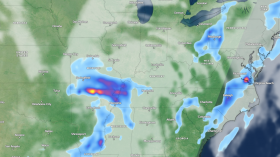As some of you may already know, the direction that ocean currents take is significant in determining the direction of the flow of genes in so-called rafting species, such as pipefishes and seahorses. However, this also depends on the particular traits of the species involved in rafting propensity.
A study by researchers from the City College of New York or CCNY has focused on pipefish and seahorse species to explain and determine how such high genetic diversity can be a contributor to the extinction of small populations.
The paper was published in the Proceedings of the Royal Society B, a journal based in Britain. The study was by a team of researchers led by Laura D. Bertola and Michael J. Hickerson. The research is titled: "Asymmetrical gene flow in five co-distributed syngnathids explained by ocean currents and rafting propensity."
The research team is based in the CCNY's Division of Science, which is one of eight schools and divisions in the City College that are driven by funded research, scholarships, and creativity.
The study reveals how ocean circulation that drives the drifting of macro-algae may be crucial in serving as a mode of dispersing marine organisms. This discovery may help scientists predict genetic connectivity on the population level as well as the directions that make dispersal effective.
The researchers used data on single nucleotide polymorphism that is genome-wide. These data helped them investigate whether the directionality of gene flow in two species of seahorses of the genus hippocampus as well as three species of pipefishes of the genus Syngnathus also correspondingly follows the ocean's predominant circulation patterns. The areas used in the study include the northwestern Atlantic Ocean and the Gulf of Mexico.
Around the British coastline, two species of Hippocampus seahorses can be found: H. guttulatus or the Spiny Seahorse and H. hippocampus, or the Short-Snouted Seahorse. Meanwhile, there are at least 32 species of Syngnathus pipefish.
The researchers also explored the possibility that gene flow magnitudes could be predicted by species' traits that are related to the ability for active dispersal as well as preferences in habitat.
Hickerson said that the team inferred the demographic histories of the syngnathid species, which are co-distributed. They used coalescent model-based estimates to indicate whether the directionality of gene flow agrees with data on ocean circulation, which predicts northward and eastward transport of macro-algae.
However, Hickerson also adds that the magnitude by which the ocean currents influence such a pattern is apparently very dependent on the particular species-specific traits that relate to habitat preferences and rafting propensity.
Hickerson also stated that the team's study highlights help to explain the patterns of diversity and population structure in many marine ecosystems, with the combined use of circulation data of oceans and population genomic inference.
Aside from Bertola and Hickerson, other members of the research team include Isaac Overcast, Carole C. Baldwin, Stephen Harris, John D. Robinson, Alexander T. Xue, Nathan F. Putman, and J. T. Boehm. The paper can be found on this website.
© 2024 NatureWorldNews.com All rights reserved. Do not reproduce without permission.




![Wildfire Activity in Wet African Tropical Forests Exacerbated by Deforestation, Climate Change [Study]](https://1471793142.rsc.cdn77.org/data/thumbs/full/70409/280/157/50/40/wildfire-activity-in-wet-african-tropical-forests-exacerbated-by-deforestation-climate-change-study.jpg)
